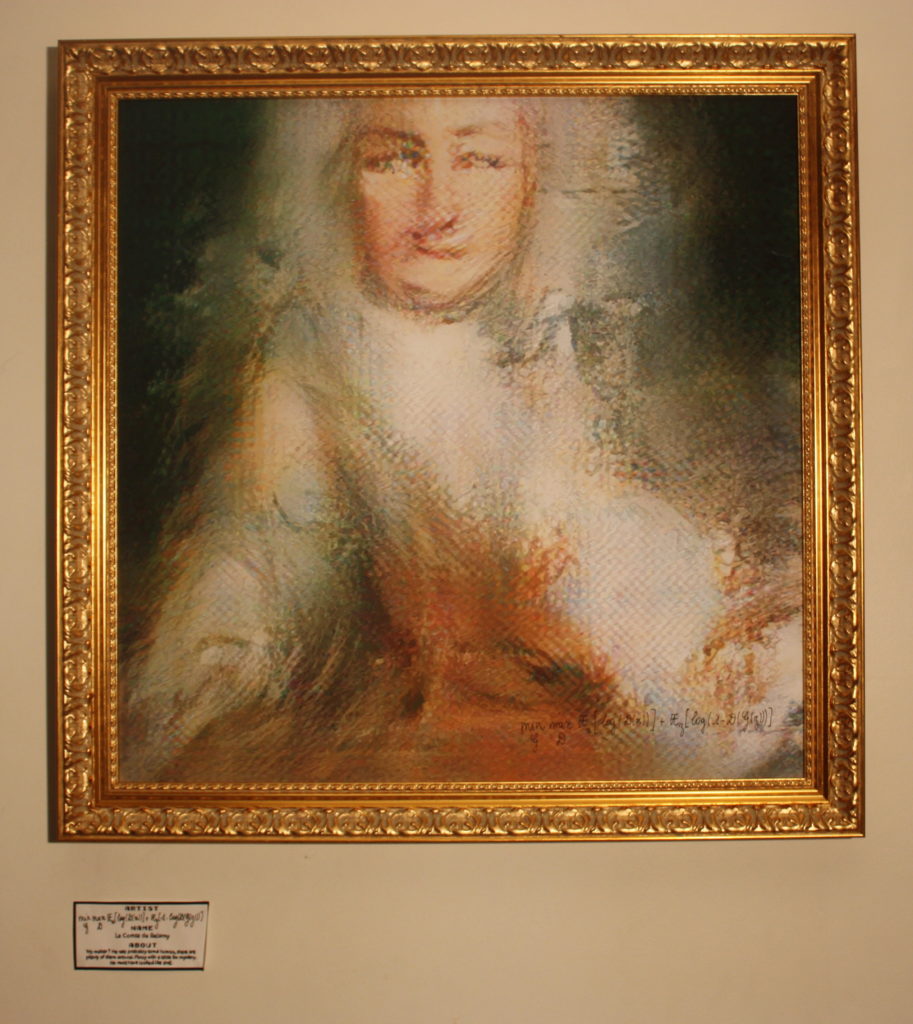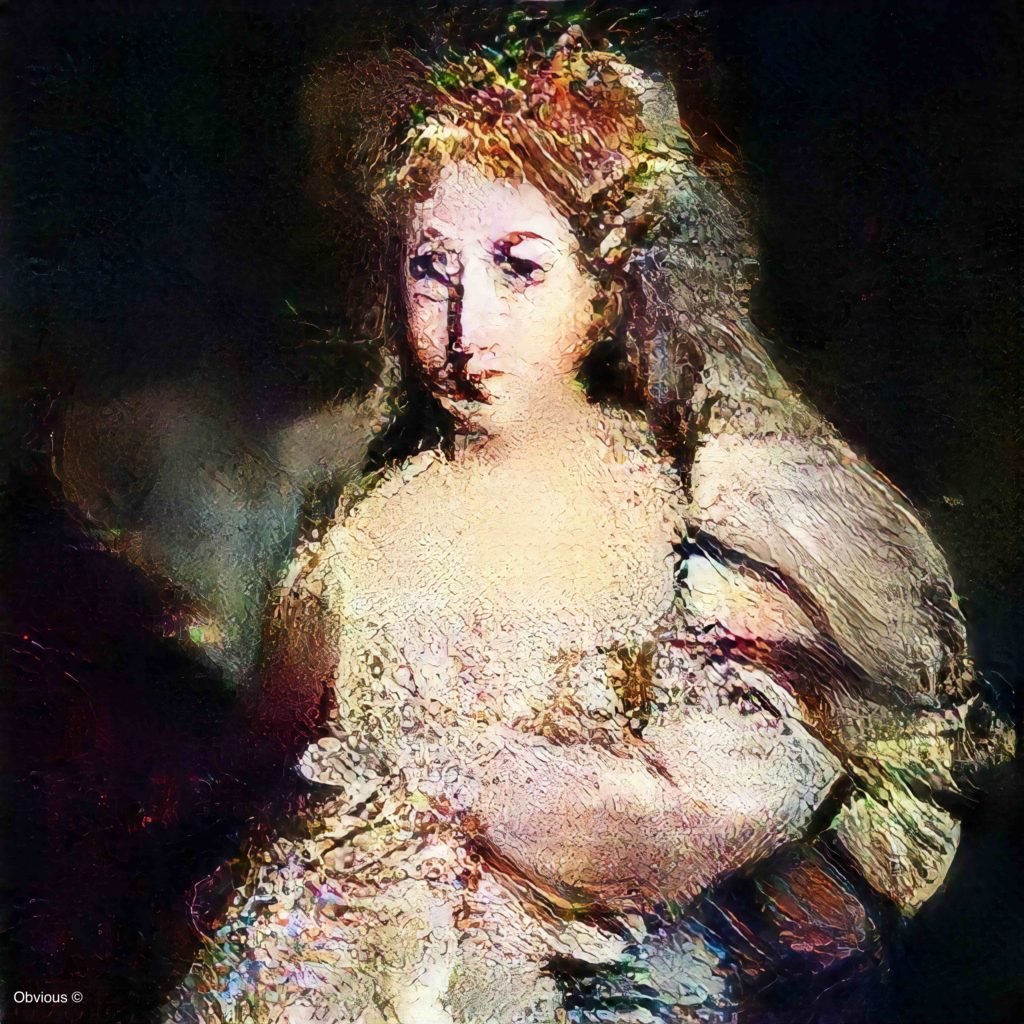Art World
Why One Collector Bought a Work of Art Made by Artificial Intelligence—and Is Open to Acquiring More
See the novel work, which joins Nicolas Laugero-Lasserre's pieces by Banksy, Shepard Fairey, and other human artists.

See the novel work, which joins Nicolas Laugero-Lasserre's pieces by Banksy, Shepard Fairey, and other human artists.

Naomi Rea

The Paris-based collector Nicolas Laugero-Lasserre is known for his extensive collection of urban art by the likes of Shepard Fairey, Invader, Banksy, and Swoon. But recently, he made a novel acquisition by a very different kind of artist. His latest purchase, Le Comte de Belamy, was created by artificial intelligence.
Laugero-Lasserre bought the work directly from Obvious, the collective that created the AI behind it, for around €10,000 ($12,000) in February. The AI portrait joins 150 works in his collection made by 50 human artists. It is now on view alongside other highlights from his holdings at Paris’s Art 42, a gallery inside technology entrepreneur Xavier Niel’s foundation école 42.
“I just find it amazing that some young people built a program allowing the creation of an original artwork, based on a selection of the ‘bests’ from past art history,” Laugero-Lasserre, who is also the director of ICART, a private art school, tells artnet News. He calls the innovation “grotesque and amazing at the same time.”

Le Comte de Belamy. Image courtesy Obvious.
“Have we ever imagined that creativity could come from a machine?” Laugero-Lasserre asks. “It’s not just inspiration from the past, but actual new pieces.”
Might he consider splurging on another work made by AI? “Why not?” he says. “If I fall for another one.”

Signature on Le Comte de Belamy. Image courtesy Obvious.
The work was made without human intervention by a machine using an artificial intelligence system called Generative Adversarial Networks (GAN). It works by mimicking characteristics of images in a training data set (in this instance, paintings from the 14th to the 18th centuries) until it can fool an observer into thinking the image is human made.
The French collective responsible for the AI behind Le Comte de Belamy, Obvious, says this is only the beginning. They will soon offer a companion AI-generated piece, La Comtesse de Belamy, at auction at a starting price of 10,000 euros ($12,000). (They have not yet determined which auction house will offer it and remain open to private offers.)

La Comtesse de Belamy. Image courtesy Obvious.
A spokesperson for Obvious told us that although the works were created independently, the collective chose the titles of both artworks, which are the first in a limited series. “We chose ‘Belamy’ as a tribute to Ian Goodfellow, the AI researcher that, together with his team, came up with the mathematical formula which is at the basis of the models we use to create these artworks.” (Goodfellow—who, just to make you feel unaccomplished, was born in 1985—roughly translates into “Belamy” in French.)
The collective says that although they are not the first to engineer AI-produced artworks, nothing has previously been good enough to be sold due to computational limitations. The legitimization of AI-made work on the market, they believe, is a sign of the dawn of a new artistic movement.
What Obvious calls “GANism,” a movement that takes its name from its AI system of choice, “brings, through the generation of art with machines, a new complexity, an increased attention for detail, and the multiplication of possibilities of interpretation to the very notion of art,” the collective tells artnet News.
The proceeds from the recent and forthcoming sales will be used to further the collective’s research into training its algorithm and delving into 3D modeling.
Watch the generation process for La Comtesse de Belamy below.